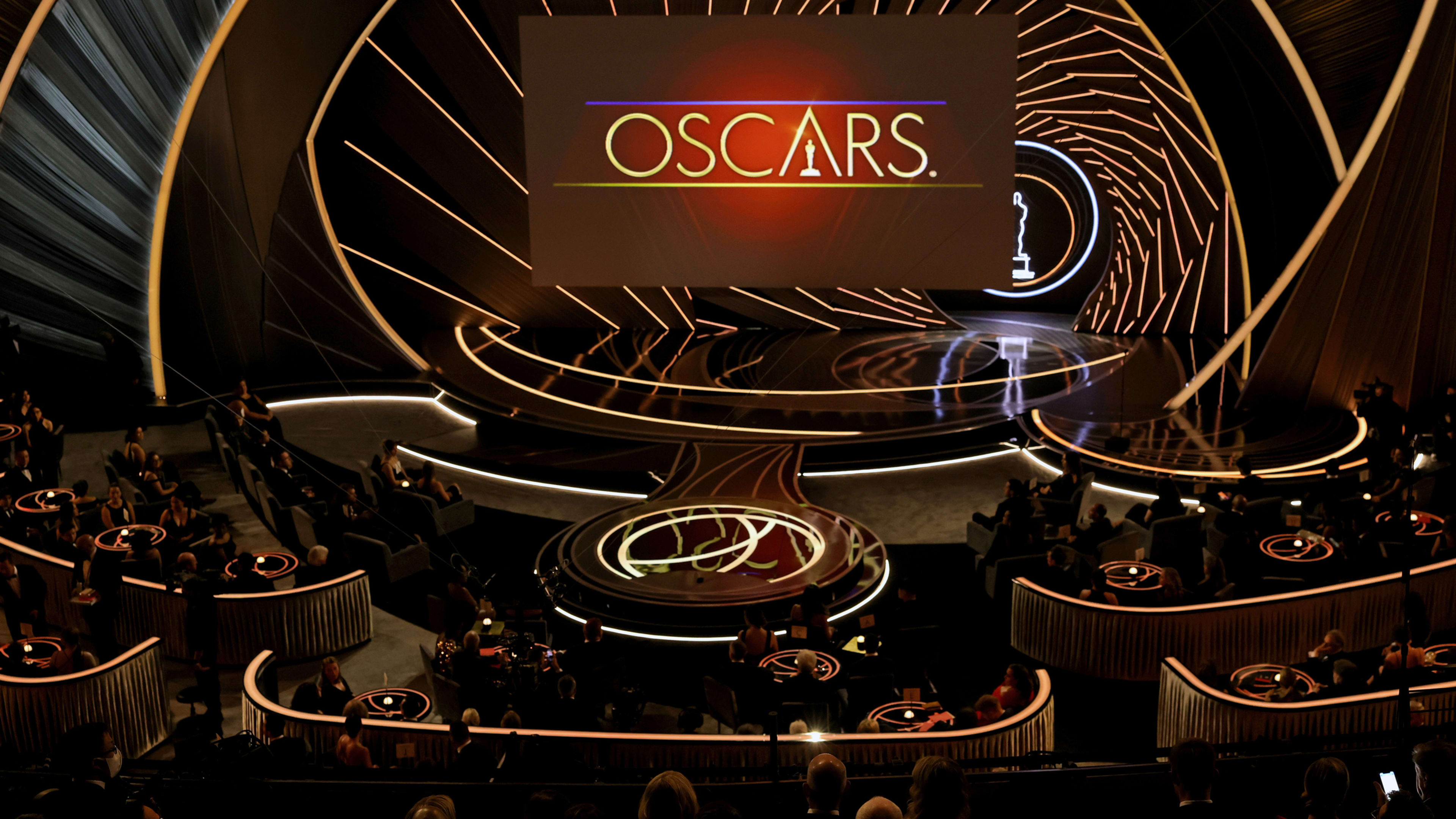The stage can’t be completely to blame for what happened at last year’s Academy Awards ceremony, but it was arguably an accomplice. When Will Smith walked up onto the Oscars stage and slapped Chris Rock, he didn’t have far to go.
The stage had been designed deliberately to put A-list stars and nominees up front and on the same plane as the stage itself, blurring the line between audience and show. Smith stood up from his lounge chair and freely strolled up to Rock, shocking the audience in the theater, and the roughly 16 million people watching on television—not to mention Rock himself.

Ahead of that now-notorious 2022 broadcast, production designer and creative director David Korins told Fast Company that the stage design was intended to encourage more engagement among the presenters and the honorees. “It’s created a very immersive environment,” he said.
On TV the effect was charming, recalling the cocktail party vibes of the early Oscars ceremonies. But with one slap, Korins’s hypnotizing visual feast was violently abused.
This year will be different, according to production designers Misty Buckley and Alana Billingsley.

“Last year we had the opportunity to explore a completely different seating arrangement,” Billingsley says. “The winners were accepting the award among their peers, which created an immediate social immersion. This year the immersion is more in the work.”
The design they’ve come up with turns the Dolby Theatre in Los Angeles into an encompassing portal that takes on the look and feel of the moviegoing experience, as well as the films being honored. “We were very inspired by classic movie theaters, movie houses, and social salons,” says Buckley, pointing to art deco theaters in L.A. and around the world, and their material palette of bronze and brass.

“All of them had this fantasy quality about them that admitted the fact that if you go to the movies what you’re trying to do is forget about the outside world,” Billingsley adds.
About 3,500 square feet worth of LED screens are embedded around the stage and throughout the theater to help draw live audience members and TV viewers into the space, which will feature elements of movie houses from across time. “The space will transform throughout the night so it never feels like you’re in one era or one type of theater,” Buckley says.
Those screens are layered into the architecture of the theater, with physical scenery framing them and in some cases overlapping with the digital displays. “The goal is not to think of it as a screens show at all. Hopefully you forget how the images are coming at you,” Billingsley says.
The stage is also an attempt to leave the tumultuous 2022 broadcast in the past. Neither Buckley nor Billingsley are strangers to unpredictable, high-profile live events. Buckley did the production design of the 2021 Grammy Awards broadcast, as well as the halftime show at the 2016 Super Bowl. Billingsley was an art director on six previous Oscars broadcasts, and has also worked on the Emmys, the Grammys, and the BET Awards. Unexpected moments at these events—streakers, “wardrobe malfunctions,” physical altercations—are not unprecedented. Designing around them is nearly impossible. But by making the design about losing oneself in the screen, it may be a subtle cue to ego-centric audience members that the ceremony is about more than personality.
That’s the hope, anyway. In a press conference ahead of this year’s broadcast, the production team was determined to not make this year’s show about last year’s unpleasantness. “We’re going to acknowledge it, and then we’re going to move on, because I think that’s probably what everyone wants,” said Molly McNearney, an executive producer.
Billingsley says this year’s stage design was not a reaction to what happened in 2022, but rather more of a reset to the way the ceremony had been able to operate before the pandemic, with a densely packed crowd in the audience watching a show, just like viewers at home.
“We were excited about the possibility of taking over and using architecture as a way to tell that story, as a way to celebrate the experience,” she says. “Everything from walking under the marquee and into the theater to being overwhelmed by the size of the screen and letting yourself be engulfed in the drama of what’s about to play out.”
After a few pandemic years when going into a crowded movie theater was either impossible or unwise, this year’s stage is an oversized reminder that moviegoing can be both an escape from reality and an opportunity to have those physical, engulfing experiences out in the real world.
Recognize your brand’s excellence by applying to this year’s Brands That Matter Awards before the final deadline, June 7.
Sign up for Brands That Matter notifications here.
